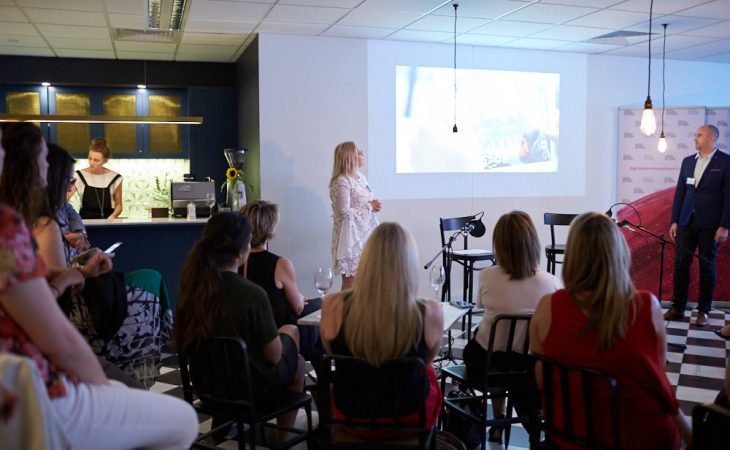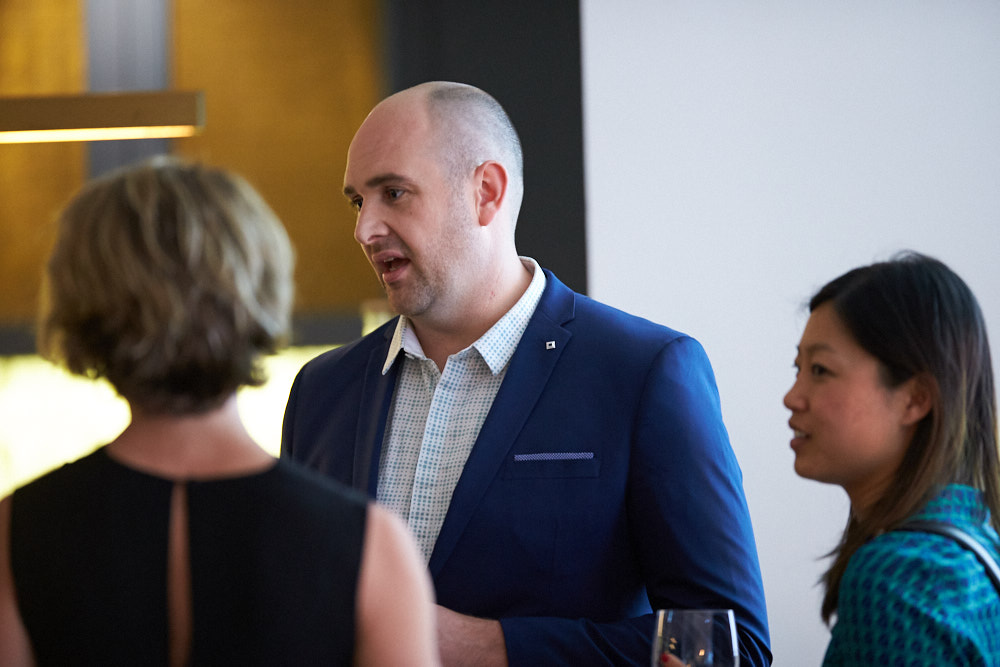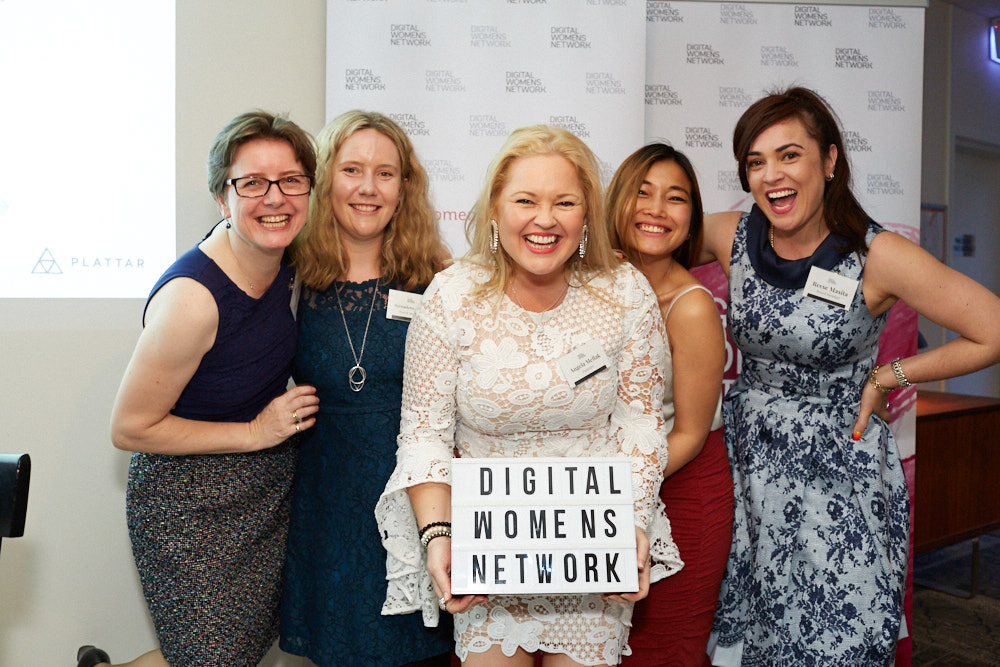We came to an end of our event series for the year learning about the revolutionary AR technology from Rupert Deans, CEO of Plattar, an Augmented Reality development platform. It was a night full of exciting movies and illustrations of how AR is elevating the user experience across various industries ranging from retail, education, fashion to medicine.
Rupert started by sharing his own story, how it all started in Christchurch, NZ. Rupert was dyslexic as a child, and only interpreted the world visually. He dropped out from school and moved into design and development at a very young age, setting up a branding workshop early in his career, and building a website development company in NZ. He then sat on the digital agency One Fat Sheep for a few years before coming across oneof the early apps using AR to augment a 3D house on a smartphone. The idea blew his mind and he thought how he could do it better.
The journey started with Rupert going to the company Hell Pizza and creating first 3d zombie on a pizza box. Inspite of it’s growing popularity around the world, AR wasn’t a very scalable business for the demand.
Not losing hope, Rupert then saw massive opportunity to build a platform where clients could build their own AR apps, and that’s how he came up with Plattar!
Here’s a wrap up of the rest of the evening that Rupert spent answering questions from Angela and the inquisitive audience.
So how has AR penetrated into various industries enhancing visualization, to empowering audience to problem solving?
- Retail – Customers can see a product in their own context, e.g. customers wanting to buy cushions can see how it would blend in their own environment before picking a colour or design.
- Training – might want to look at empowering people to do something different – be guided step by step on how to put a plug together
- Fashion – Brands like L’Oreal are already using AR showcasing how to put on make up on virtually.
- From visualisation to empowerment to – problem solving
- Medicine – AR is also being used in medicine where students are able to touch a human brain without really touching a live body!
Why should you incorporate AR into your digital strategy
In the future, there will be digital layers of information overlaying everything in your real life. This additional layer will be able to enhance your daily life in ways that we can’t even comprehend right now. Upon waking up in the morning there will be inspiration for what to eat projected across the content of your kitchen cupboard. Transport information available to you on your dining room table and upon reaching the office, interactive 3D meeting content displayed for you and your colleagues.
We imagine a world with Augmented Reality, and in the future mixed reality, where people will be able to design and replace everything around them to create their perfect environment. Cloudy day? Give yourself blue skies! With the integration of AI and geolocation, we could improve people’s safety by keeping users informed through real-time data if they are in an unsafe location and provide them with an alternative route or safety precautions to take.
So the crux is that the technology is coming, according to Deloitte, 88 per cent of mid-market companies (firms with annual revenue of between $100 million and $1 billion) were using some form of virtual or augmented reality as part of their business and the AR market is projected to reach $117.4 billion by 2022, as indicated by Markets and Markets research. What this means to marketers is consumers will start to see companies employing this technology for consumer experiences as the norm, just as websites have been. So starting your learning curve now will mean that you will be a leader in your space and already be much more advanced compared to your competitors.
Hopefully by 2018 AR can be experienced through the web and users won’t need to download an app anymore.
What are the 5 steps for somebody to incorporate AR and VR into their lives?
The first thing any business should do to establish if they need this technology is to understand where it can add value to to their customer experience. This can come in many different ways for different businesses.
- You can make it an important part of your mobile strategy where consumer engage with your content through campaign or in stores experiences.
- You might also add augmented reality to the ways that consumers can make their purchases.
- The business might bring it in as the only way new staff or existing staff get inducted and also training on new OHS procedures.
- It could become the new way that company wide announcements are made, instead of getting emails that no one reads employees would receive a postcard on their desk with a special message from the CEO to the Christmas party for example.
- If you are producing a lot of printed material you can bring that media to life in a digital sense, allowing your take that offline activity online.
How can AR help people?
The digital reality space is continuing to expand with the likes of Apple, Facebook, Google, Microsoft and Alibaba investing billions of dollars over the past year into the AR/MR/VR industries.
This growing scope of opportunities means that hardware companies, software developers, designers and brands can all benefit from the new ways that people interact with products and environment around them.
We are already seeing amazing and useful, wearable hardware coming from Microsoft. Coupling this with the advances in mobile phones that will allow mainstream smart devices to analyse and measure the surrounding environment, we will start to see even more powerful applications of AR for all industries.
Plattar has worked to establish an early client base with many industry leaders. With these companies joining us to pioneer on the Plattar platform, we have proven the potential for AR technology across multiple industries.
A comprehensive but by no means exhaustive list of practical commercial opportunities includes:
- Product Visualisation: Allowing consumers and businesses to see your products before purchase and reduce returns.
- Training: Providing effective, memorable training experiences
- Marketing: Present your products, services and brand through engaging and interactive experiences.
- Property: Allows customers to virtually walk through property outside of open homes.
- Design: Visualise and experience products before production.
- Education: Subjects come to life through real-time interactive lessons and material.
- Tourism: Create engaging digital layers for the customer to drop on top of the existing experience.
- Instruction and Repair: Reduce mistakes and improve servicing quality with up to date instructions and information.
- Operations productivity: Allow plant room floor to access and action upon real-time data without having to be near a workstation, increasing efficiency and reducing liability.
- Body modifications: Visualise how that tattoo or piercing looks before purchase.
- Print media: Add a digital layer to the content already presented to customers and increase outcomes.
Rupert finally closed with what’s to come in 2018:
According to Gartner and other research firms Augmented Reality has survived the hype and is fast becoming part of our daily lives. Pokemon Go and Snapchat have brought AR to the mainstream and validated what was promised. We are still in the early stages with three important enabling technologies on the horizon:
- Truly Mobile web AR
- 5G internet
- Smart vision glasses








